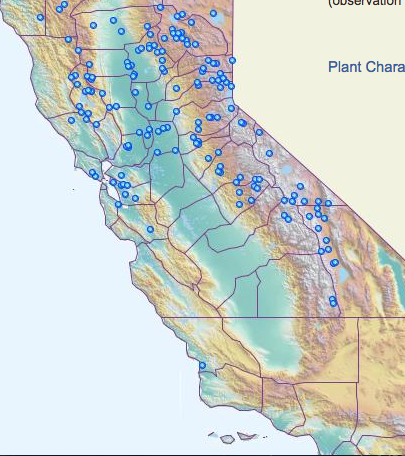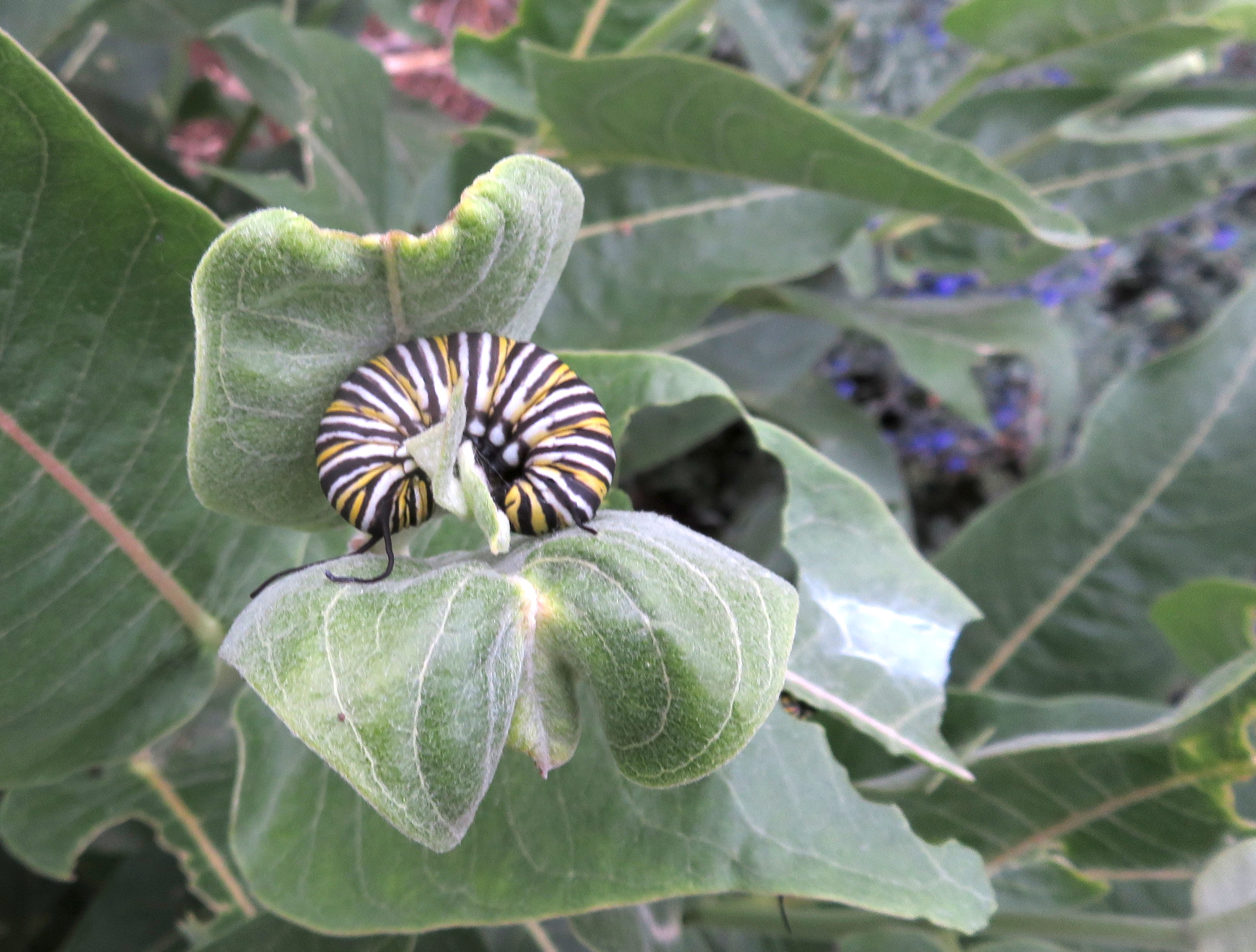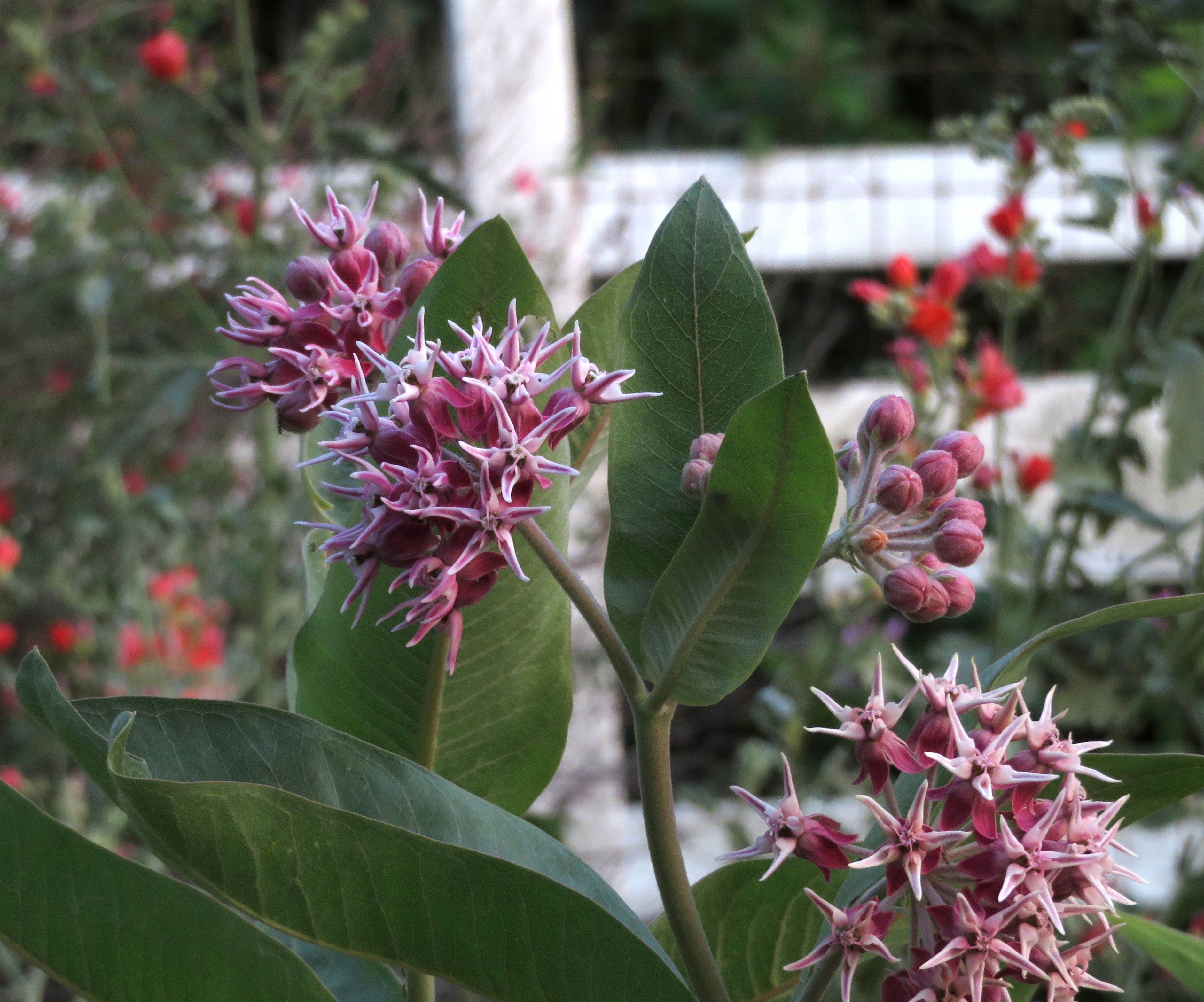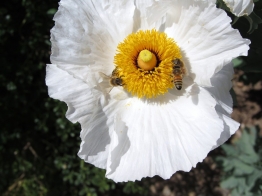Why My Showy Milkweed-Asclepias speciosa-Won’t Bloom?
Why My Showy Milkweed-Asclepias speciosa Won’t Bloom?
Bob Sussman 5/13/19
A real scientific explanation or, we’ll more likely “even a blind chicken finds a kernel now and then.”
For several years we’ve grown a variety milkweed plants (Asclepias) and they’ve mostly bloomed with one exception. The showy milkweed – Asclepias speciosa just refused to flower. The pictures on the web of this showy milkweed were just beautiful and they grow from California east into the Great Plains, not exactly a small geographic area. I remember talking to Carol Bornstein ( a legitimate California native plant expert) she asked me do yours ever flower? I remember thinking we’ll they probably don’t bloom in a nursery pot and need to go into the ground, some plants are like this.
Still, why don’t my showy milkweed plants flower? I brought some home and planted them in my backyard next to flowering nectar plants for the butterflies and caterpillars. One year I even thought I saw some buds. Maybe the internet- the store of all knowledge (real and fake) will have the answer. Right! No! Stuff like plant it in the sun or plant it in the shade…water 1x month or 1x weekly …no help.
I think I might finally have the answer even if it was mostly an accident. At home in our backyard we have two sections of showy milkweed. Both sections grow very well but only one is surrounded by nectar plants. The other is in a section that was more recently planted along with lots of different desert mallows, not exactly nectar plants. You might be thinking ahead a little and that’s OK. Additionally, we get two mating seasons/caterpillar seasons in Southern Calif.. The longest season is in fall though early winter. The other season is spring. Spring is the time when the showy milkweed goes into bud and then flowers. If there are monarch caterpillars while the milkweed is in bud …the caterpillars will eat the buds and no flowers.
That’s the theory, can we test it? Yes, we can …If you’re in a region where you have monarch caterpillars in spring, the flowering time of the showy milkweed you should have no wild showy milked in the area? In fact that’s the case. The showy milkweed grows and flowers (the flower part is important) where there are no monarch caterpillars.Borrowing a map from Calflora you can see that the natural range is just above where they roost for the winter and mate in early spring.

Note no natural areas where Asclepias speciosa grows south of say San Luis Obispo County. Now the other native milkweed flowers in late spring when the monarchs are flying north – our milkweed (Asclepias fascicularis – plus a couple of others) flower and seed all good!
Now back to you backyard massive scientific study… our showy milkweed near the nectar plants is loaded with caterpillars – just eating everything- the buds couldn’t possibly make it to flower.

The other showy milkweed plants with no nectar plants nearby ….and no monarch caterpillars eating them …are flowering just fine!

So here’s the one sentence summary. Showy milkweed- Asclepias speciosa doesn’t grow in nature when you have monarch caterpillars eating it during it’s normal blooming season. When you don’t have monarch caterpillars eating it during it’s blooming season in nature, it does. Is a real scientific explanation that I’ve stumbled on or …as one of my friends from long ago used to say “even a blind chicken finds a kernal now and then”, only time will tell.
